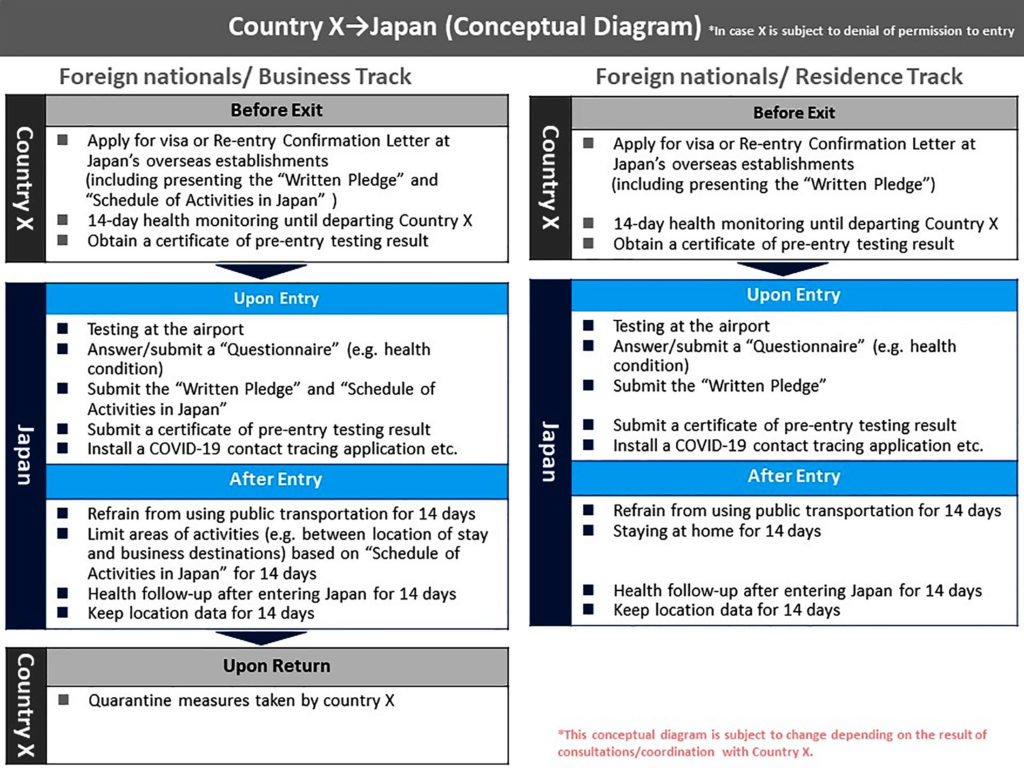Breaking It Down:
Japan Easing Entry Restrictions For All Countries in October
Japan just announced it will be easing entry restrictions for visitors from all countries. Japan has maintained a list of countries from which it banned foreign nationals. Most recently that list grew to 159 banned countries as Japan’s responded to surging COVID-19 cases around the globe. Now Japan is easing entry restrictions for all countries beginning October 1st. But there’s a huge limitation.
Japan Easing Entry Restrictions – But Not for Tourists, Yet

Tokyo Tower in Minato, Tokyo, Japan
According to Japan Times, Japan’s easing of entry restrictions applies to a limited group of qualified travelers. The latest announcement is not targeted at tourists, but rather long-term visitors. These include foreign students, health workers and those planning on extended days cultural journeys.
Now hearing ‘cultural journeys’ some people might think back to when President Obama opened up Cuba to tourism. The US State Department allowed ‘educational activities’ and many tourists treated this as a catch-all for many tours to the communist country. Japan is not allowing such loose interpretations for would-be tourists to enter their nation.
This new initiative requires stays of at least 90 days, so no quick trips to Japan. In addition, it will require mandatory 14-day quarantine upon arrival. Short-term tourist visas are not included in the recent announcement.
Japan’s Easing Entry Restrictions – A Step Towards Opening Tourism
Japan has developed a strict protocol to allows persons back into their country from the travel bubbles it has developed with some Asian neighbors. Japan’s current travel bubble agreements include Cambodia, Laos, Malaysia, Myanmar, Taiwan, Thailand and Vietnam.

Japan Entry Requirements Protocol for Approved Countries
Japan will also make COVID-19 health questionnaires for potential travelers available online.
The Japanese Government is considering possible safe alternatives to quarantine. Japan’s government is looking at a process permitting travelers a chance at testing their way out early from quarantine. These protocols provide a roadmap for this new visitor imitative announced by Japan’s government. If successful, Japan could use this system to begin reopening for short-term tourists.
Japan Easing Entry Restrictions in Phases
At the outset visitors will be limited to 1,000 arrivals per day under this new initiative.
At the same time, Japan is working to stimulate domestic tourism. It created its “Go To Travel” subsidy program to reimburse residents for domestic travel within Japan. In another step towards supporting tourism, the government announced that domestic trips to and from Tokyo will be included in its domestic travel subsidy program beginning October 1st.
Perhaps international tourists will be welcomed soon. Prime Minister Yoshihide Suga emphasized “to revitalize the economy, it is indispensable to resume international travel” in a recent statement.
Final Thoughts
Japan plans to start relaxing entry restrictions by looking at the condition of COVID-19 infections in each country. It will also consider the degree of need for travel in an effort to revitalize its economy.
This offers some positive news as many Asian countries have been slow to reopen their borders to travelers. Japan’s strategy has always been to reopen its borders to business travelers, followed by students and eventually tourists. Most likely, tourism will be opened to Japan’s Asian neighbors first. Still, this latest announcement of Japan easing entry restrictions offers good news.
Check Out other global reopening news:
Reopenings – Europe Coronavirus Travel Restrictions by Country
South America Coronavirus Travel Restrictions & Reopenings by Country
Reopenings – Latin America Coronavirus Travel Restrictions by Country
Coronavirus Domestic Travel Restrictions – USA States, Cities
Reopenings – Caribbean Coronavirus Travel Restrictions by Country
The world’s travelers wait in anticipation for global reopenings.
The responses below are not provided or commissioned by the bank advertiser. Responses have not been reviewed, approved or otherwise endorsed by the bank advertiser. It is not the bank advertiser's responsibility to ensure all posts and/or questions are answered.